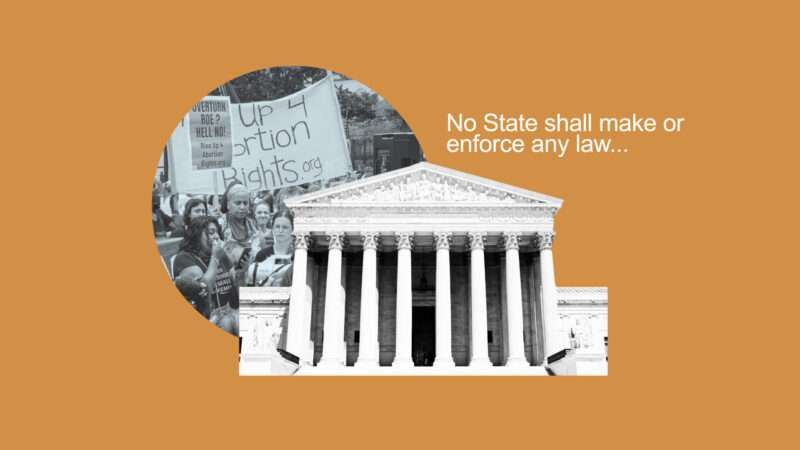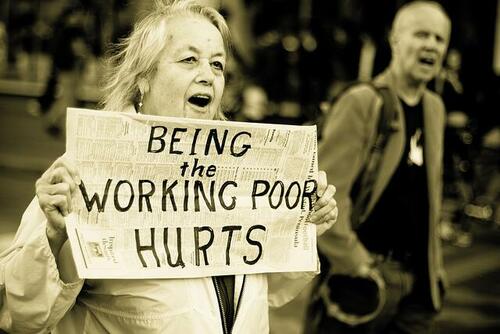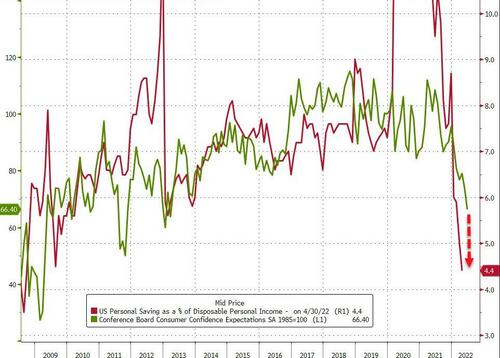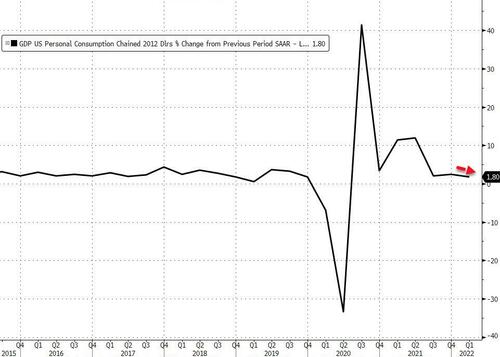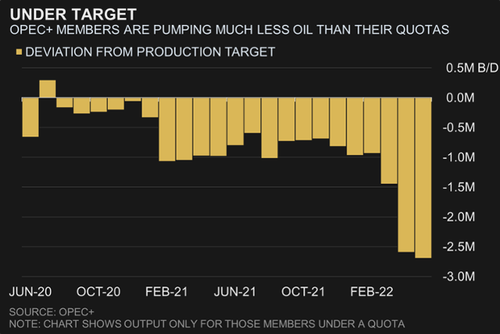
There is no question that Donald Trump’s rhetoric and inaction before and during the 2021 Capitol riot were reckless—so reckless that they easily justified his second impeachment. But as I have argued before, that does not mean he is guilty of incitement, a criminal charge that requires proof of intent. Does yesterday’s congressional testimony by Cassidy Hutchinson, a top aide to then–White House Chief of Staff Mark Meadows, make that charge more plausible?
Columbia law professor Daniel C. Richman is skeptical. “This is a dramatic last piece that enriches the story,” he told The New York Times. “But it’s not clear that it changes the fundamental question of criminal liability.”
By contrast, The Dispatch‘s David French, a conservative lawyer and former president of what is now the Foundation for Individual Rights and Expression, thinks “the case for prosecuting Trump is stronger than it’s ever been before” in light of Hutchinson’s testimony before the Select Committee to Investigate the January 6th Attack on the United States Capitol. Given French’s long record as a defender of the First Amendment, his take cannot be readily dismissed. But I still think the evidence falls well short of what would be required to convict Trump of incitement while respecting the freedom of speech guaranteed by the First Amendment.
French focuses on Hutchinson’s report that Trump knew some of the supporters who showed up for the pre-riot rally at the Ellipse were armed but nevertheless told the Secret Service to stop screening them with metal detectors. Hutchinson said she heard Trump say something like this: “You know, I don’t effing care that they have weapons. They’re not here to hurt me. Take the effing mags [magnetometers] away. Let my people in. They can march to the Capitol from here. Let the people in. Take the effing mags away.”
Some Trump supporters were carrying flagpoles that would later be weaponized against police. Rep. Liz Cheney (R–Wyo.), vice chair of the January 6 committee, yesterday noted that some protesters also had “pepper spray, knives, brass knuckles, tasers, body armor, gas masks, batons, [and] blunt weapons.” She added that the committee “has obtained police radio transmissions identifying individuals with firearms, including AR-15s, near the Ellipse on the morning of January 6th.”
Hutchinson says Deputy Chief of Staff Tony Ornato told Meadows about the weapons on the morning of January 6. The committee yesterday played a video of Hutchinson’s private testimony to that effect. “I remember Tony mentioning knives, guns in the form of pistols and rifles, bear spray, body armor, spears, and flagpoles,” she said. “Tony had related to me something to the effect of ‘These effing people are fastening spears onto the ends of flagpoles.'” When they shared this information with Meadows, Hutchinson said, he asked Ornato if the president was aware of it, and Ornato said he was.
Trump’s lack of concern about the weapons, which he viewed as unimportant because they would never be used against him, is further evidence of his reckless self-absorption. But it does not necessarily indicate that he expected or wanted his followers to breach the Capitol, vandalize the building, or attack police officers.
Trump’s main concern at that point seems to have been maximizing the audience for the incendiary speech in which he reiterated his fantasy of a stolen election, warned that American democracy and the republic itself would be destroyed if Joe Biden was allowed to take office, and urged his supporters to “fight like hell.” He did not want the Secret Service to turn away people who were carrying weapons because that would have made the crowd smaller.
The absurd vanity of Trump’s obsession with the crowd’s size—which harked back to the “alternative facts” he offered regarding the turnout at his inauguration—was obvious in the opening lines of his January 6 speech. “The media will not show the magnitude of this crowd,” he said. “Even I, when I turned on [the TV] today, I looked, and I saw thousands of people here, but you don’t see hundreds of thousands of people behind you because they don’t want to show that. We have hundreds of thousands of people here, and I just want them to be recognized by the fake news media. Turn your cameras, please, and show what’s really happening out here, because these people are not going to take it any longer. They’re not going to take it any longer. Go ahead. Turn your cameras, please. Would you show?”
French also notes Hutchinson’s testimony that Trump initially intended to join his supporters at the Capitol, which is about two miles from the Ellipse. That much also was apparent from the speech. “I know that everyone here will soon be marching over to the Capitol building to peacefully and patriotically make your voices heard,” Trump said. “We’re going to walk down Pennsylvania Avenue…and we’re going to the Capitol.”
Hutchinson testified that the danger posed by that plan was clear to Meadows four days before the riot. On January 2, she said, Trump lawyer Rudy Giuliani, who would also speak at the rally, told her about the planned march, and she described that conversation to Meadows. “I remember leaning against the doorway and saying, ‘I just had an interesting conversation with Rudy, Mark,'” she said. “‘It sounds like we’re going to go to the Capitol.’ He didn’t look up from his phone and said something to the effect of ‘There’s a lot going on, Cass, but I don’t know. Things might get real, real bad on January 6th.'”
On the morning of January 6, Hutchinson said, White House Counsel Pat Cipollone was determined to stop Trump from going to the Capitol because he was worried about potential criminal liability. “Mr. Cipollone said something to the effect of ‘Please make sure we don’t go up to the Capitol, Cassidy,'” she testified. “‘Keep in touch with me. We’re going to get charged with every crime imaginable if we make that movement happen.'”
Hutchinson also testified that Trump was enraged when the Secret Service told him, after his speech, that they were returning to the White House rather than driving to the Capitol. The Secret Service has disputed her secondhand account that Trump tried to grab the steering wheel of the SUV in which he was traveling and “lunge[d] towards” Secret Service agent Bobby Engel, “motion[ing] towards his clavicles [sic].” Citing “Secret Service officials who requested anonymity,” The New York Times reports that both Engel, the head of Trump’s protective detail, and the driver “were prepared to state under oath that neither man was assaulted by the former president and that he did not reach for the wheel.” But the Times adds that “the two men would not dispute the allegation that Mr. Trump wanted to go to the Capitol.”
In fact, Engel’s previous, private testimony confirms that Trump was frustrated by the Secret Service’s insistence that he return to the White House. “Engel told Jan. 6 select committee investigators that the two men discussed Trump’s desire to go to the Capitol and took different views on the topic,” Politico reported earlier this month, citing ” a person familiar with the agent’s congressional testimony.”
Trump’s desire to join his supporters at the Capitol underlines the point that he was heedless of the risks posed by moving the protest to the grounds of the building where Congress was about to certify Biden’s victory. Given the circumstances, violence was predictable. But that does not necessarily mean Trump anticipated it, let alone that he intended to incite it. Obviously, Trump should have anticipated violence. But if he did not, it would be consistent with his long record of failing to act as a decent, sensible, reasonably prudent person would.
Trump’s appalling irresponsibility was on display again after the riot started. Rather than try to stop the violence, he egged on his supporters, tweeting that Vice President Mike Pence, by refusing to unilaterally and illegally reject electoral votes for Biden, showed that he “didn’t have the courage to do what was necessary.” As French notes, video shows that the crowd outside the Capitol “surged” in response to that tweet. When Cipollone told Meadows that the protesters were “literally calling for the vice president to be effing hung,” Hutchinson testified, Meadows “responded something to the effect of ‘You heard him, Pat. He thinks Mike deserves it.'”
It has long been clear that Trump was, as French puts it, “morally and politically responsible” for the riot, which is why he was impeached. “There’s no credible argument that a mob would have stormed the Capitol if he had the basic decency to concede a race he clearly lost,” French notes.
For months, Trump ceaselessly promoted the “Stop the Steal” narrative, demanding that his supporters live in an alternative universe where he won reelection. He urged them to attend the “Save America” rally, which he predicted would be “wild” and portrayed as a last-ditch effort to stop the installation of an illegitimate president. His speech at the rally aimed to rile up fans who shared his fantasy, which he hoped would exert pressure on “weak” Republican legislators who did not. His behavior after the protest predictably turned violent was inexcusable.
But none of that necessarily means Trump was criminally responsible for the riot, a question that hinges on his intent. Under federal law, “to incite a riot” means “to organize, promote, encourage, participate in, or carry on a riot.” The crime, which is a felony punishable by up to five years in prison, “includes, but is not limited to, urging or instigating other persons to riot, but shall not be deemed to mean the mere oral or written (1) advocacy of ideas or (2) expression of belief, not involving advocacy of any act or acts of violence or assertion of the rightness of, or the right to commit, any such act or acts.”
Even advocacy of illegal behavior, the Supreme Court ruled in the 1969 case Brandenburg v. Ohio, is constitutionally protected speech unless it is both “likely” to incite “imminent lawless action” and “directed” at that outcome. In Trump’s case, it surely was likely that at least some of his supporters would do more than “peacefully and patriotically make [their] voices heard.” But the fact remains that Trump—unlike the Ku Klux Klan leader charged with advocating violence in Brandenburg, whose conviction was nevertheless overturned—did not urge his supporters to break the law. Nor is it clear that he wanted them to do so, even if he was strikingly unconcerned when they did.
As French sees it, Hutchinson’s testimony reinforces the argument that “the attack on the Capitol was unfolding as he intended.” But that testimony is also consistent with what we knew about Trump long before the riot: He is a vain, reckless, petty, impulsive man who elevates his own interests above everything else. It is perfectly plausible that Trump either did not consider or did not care about the danger of violence that day. But the Brandenburg standard, which aims to protect freedom of speech by making it difficult to hold people criminally liable for the actions of listeners inspired by their words, requires more than that.
“The First Amendment is broadly protective even of political speech that outright advocates violence,” French notes. “There is (rightly) a very high constitutional barrier to criminally prosecuting any person for allegedly inciting violence. After all, the primary responsibility for a riot rests with the rioters—in the absence of direct command authority (like a general commands his troops), nobody can make a person riot.”
That principle barred the prosecution of an odious bigot in Brandenburg. It should not be sacrificed for the satisfaction of seeing a delusional demagogue get his comeuppance.
The post Did Cassidy Hutchinson's Testimony Clinch the Incitement Case Against Trump? appeared first on Reason.com.
from Latest https://ift.tt/fYP2sVz
via IFTTT
